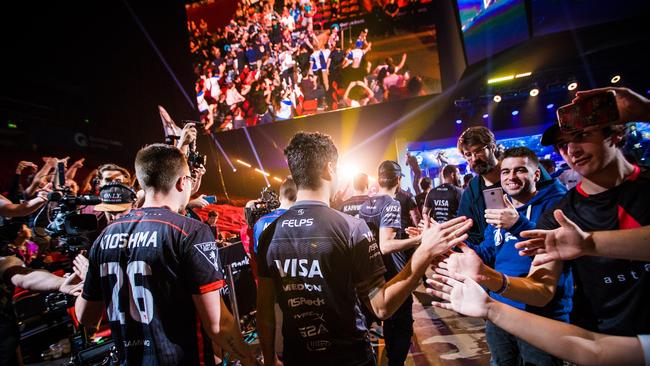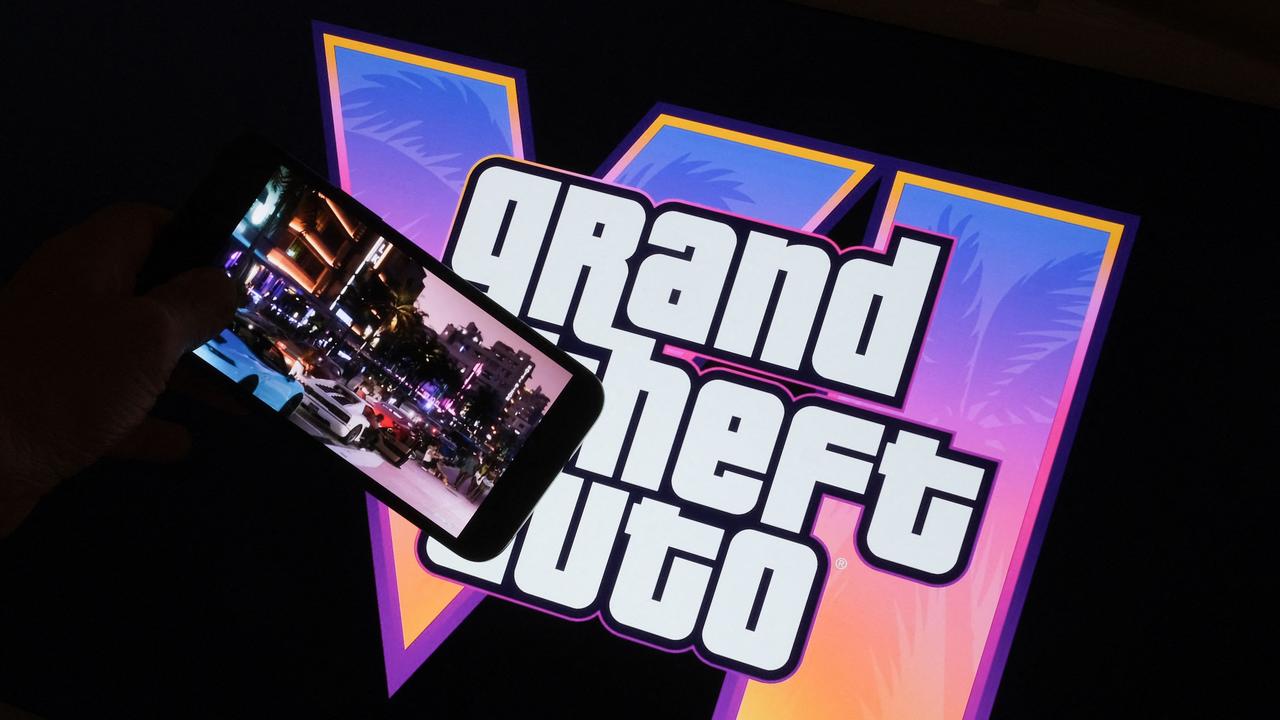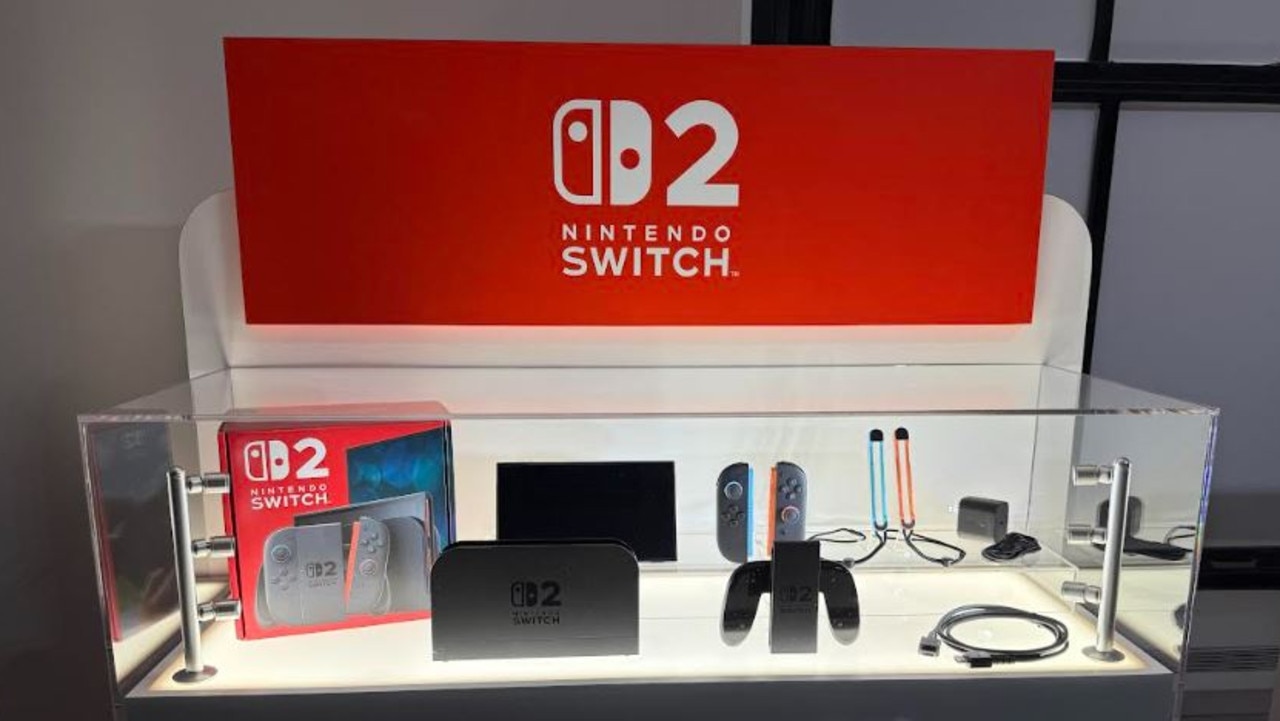Esports in Australia: Why Australia’s next top athletes will play video games
IT’S possible to make millions of dollars playing video games and Aussies are set to get a piece of the action this year as part of the esports revolution.

Gaming
Don't miss out on the headlines from Gaming. Followed categories will be added to My News.
YOU’VE heard of Australia’s elite soccer competition, the A-League, but what about the e-League?
Both feature highly skilled soccer players at the top of their game, both are governed by Football Federation Australia, and both will televise every round.
There is just one major difference between the competitions: the e-League’s greatest goals will take place on a computer screen rather than a field.
The high-profile video game competition, due to launch later this month, is just one of many esports events joining Australia’s traditional sports roster this year, with fixtures to include the Oceania Pro League backed by AFL teams Adelaide Crows and Essendon Bombers, the big-money Intel Extreme Masters games, and a British import, the Gfinity Elite Series.
Far from a nerdy niche, the competitions offer up to $US1 million (A$1.26 million) in prizemoney, millions of passionate international viewers, as well as fame and international travel for players.

Australian experts predict “it won’t be long (before) sporting grounds like Etihad Stadium will be filled by esports events,”.
Professional gameplay will even feature at the upcoming Winter Olympic Games in PyeongChang, with Olympic organisers describing the StarCraft II demonstration as “just the start of an exciting future” for esports at the world’s top sporting event.
But insiders say Australian players still have a way to go — and a major geographical hurdle to overcome — to consistently rake in seven-figure salaries and seriously challenge the world’s best players.
The esports industry generated more than $US660 million (A$832 million) worldwide last year, according to research firm NewZoo, but is expected to fetch more than $US1.5 billion (A$1.89 billion) by 2020, with Australians fuelling that growth.
Almost 4 million Aussies have watched competitive video gaming, according to YouGov, and eight in 10 of those viewers are keen to tune in again.
Telstra technology director Andrew Scott said the many new additions to Australia’s esports roster this year would give viewers plenty to watch, and the opportunity to introduce their friends to the world of professional video gaming.
“Australians have always loved their sport, and getting behind a team and barracking for it, and with new leagues and major TV networks supporting it, we’re primed to see an explosion in esports in 2018,” he said.

“It will become clear to everyone that esports and computer games in general are not a marginal phenomenon or just the domain of the nerds.”
Mr Scott said esports events had the potential to fill Australian sports stadiums in future, and could deliver new fans to sporting teams with the foresight to support it.
Football Federation Australia will be among those waving the flag for esports when it launches the e-League on February 15.
Each A-League club nominated two esports players to represent them in the FIFA 18 competition last Thursday, including former Melbourne Victory player Mitch Austin, 26, who was ruled out of playing the physical season due to a knee injury and will now play for the club on a virtual pitch.
All nine rounds of the e-League will be broadcast on the Fox Sports website and twitch.tv.
Adelaide and Essendon AFL clubs have also purchased professional League of Legends teams, Legacy and Abyss, to play in the Oceania Pro League this year where, if successful, they can compete on the world stage for a $US1.5 million prize.
British firm Gfinity will also launch an Elite Series championship in Australia for the first time in March, and Intel will bring its Extreme Masters tournament back to Sydney in May for an extended event with a bigger prize pool of $US250,000.

ESL Gaming Australia managing director Nick Vanzetti said the tournament was only held in four locations worldwide but huge crowd numbers last year convinced Intel to bring it back to Sydney and double the number of teams competing this year.
More than 7000 people showed up to watch each day of the Intel Extreme Masters event last year, he said, and more than 8 million viewers tuned in online, bringing in a bigger audience than a similar event held in California.
“Esports in Australia is absolutely booming,” he said.
“We’re filling arenas, people are tuning into the content, and we’re seeing mainstream brands like McDonald’s and St George Bank get on board — it’s coming ahead in leaps and bounds.”
But Mr Vanzetti said some Australian players and teams were finally breaking through on the world stage, like the Dire Wolves in the League of Legends World Championships or Team Australia at the Overwatch World Cup, but many still faced serious hurdles to becoming internationally competitive.
“The hardest thing for Australian players is the distance involved,” he said.
“Being able to play a competitive match against someone in North America or Europe is nigh on impossible because they might have 300 milliseconds advantage on your reaction time. Getting more opportunities for Australian to go overseas or have more players visit us is only going to reduce the skill gap for our Aussie teams.”
Originally published as Esports in Australia: Why Australia’s next top athletes will play video games







